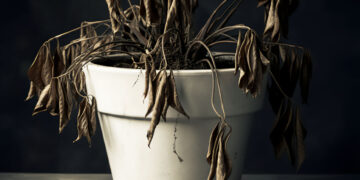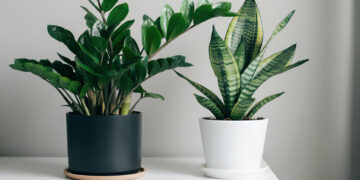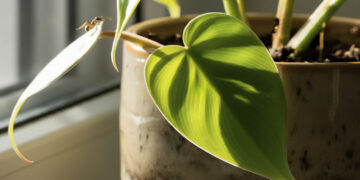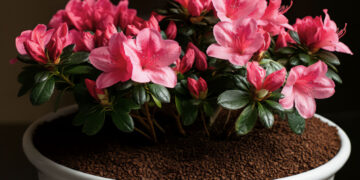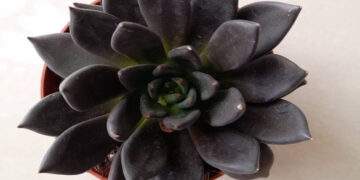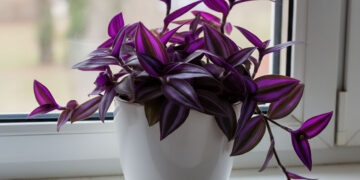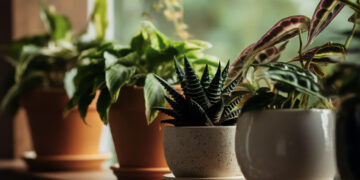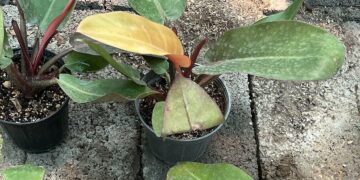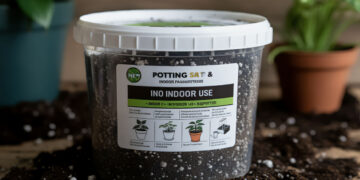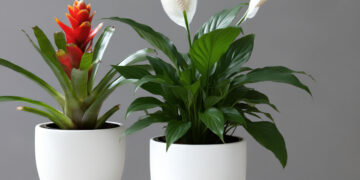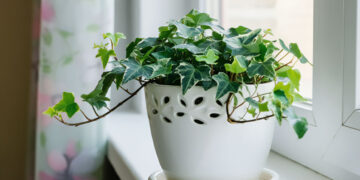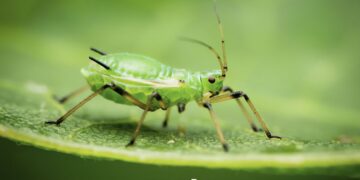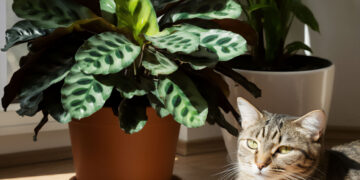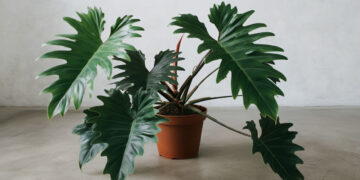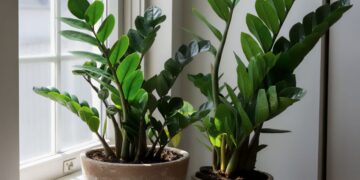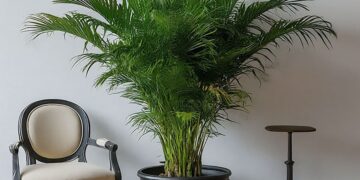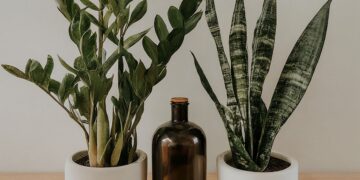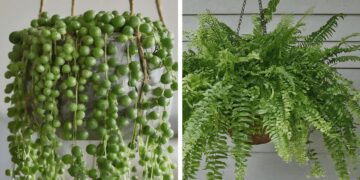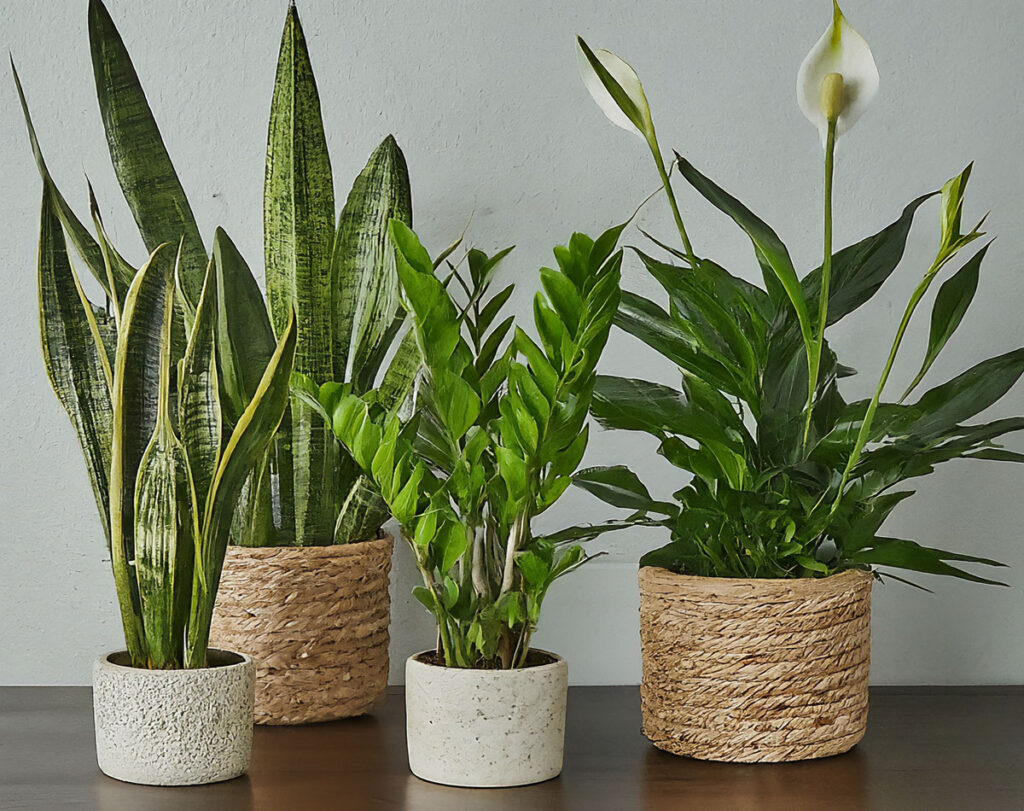
There are a variety of houseplants in the world, and I will clear up features of the 19 most common of them here. If you are interested in being a parent of a houseplant, why don’t you make up your mind about them?
If after reading this article you still have doubts about which of the popular Houseplants is suitable for you, please ask your questions in the comments section. I’d be happy to help if there’s anything I can do.
1. Snake Plant (Sansevieria trifasciata)
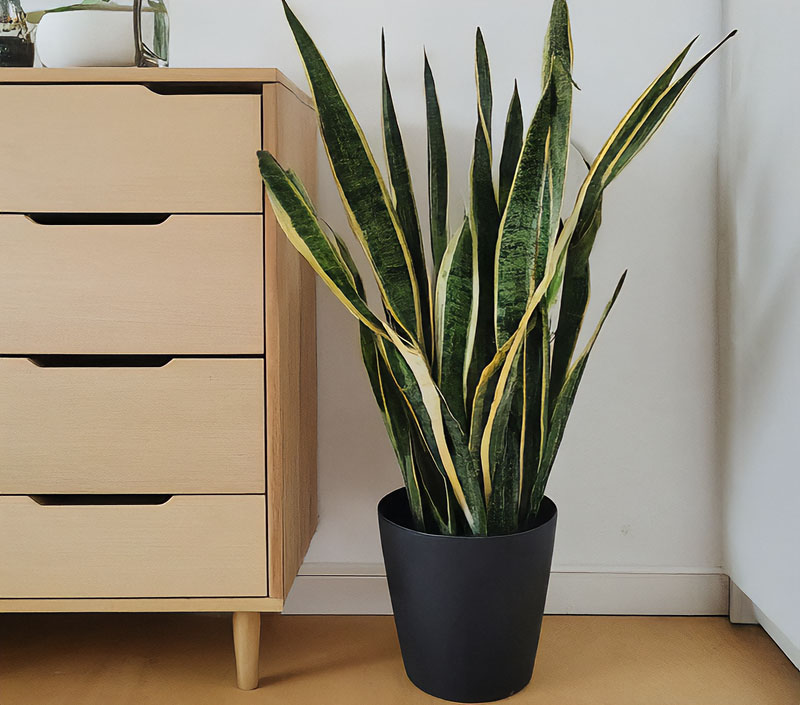
The stiff, upright, sword-like leaves with gray, silver, or gold banding or edges are the first things that make the snake plant look unique when you see it, but this is not the whole story.
The snake plant is known as a plant-it-and-forget-it because it is hardy against the lack of light and water and is also compatible with any humidity levels.
This easy-care houseplant purifies the air from toxins such as formaldehyde and benzene. It helps you to breathe in high-quality air.
Where should snake plants be placed?
If you like to keep one in your home, it is better to put it in the bedroom or living room.
2. ZZ Plant (Zamioculcas zamiifolia)
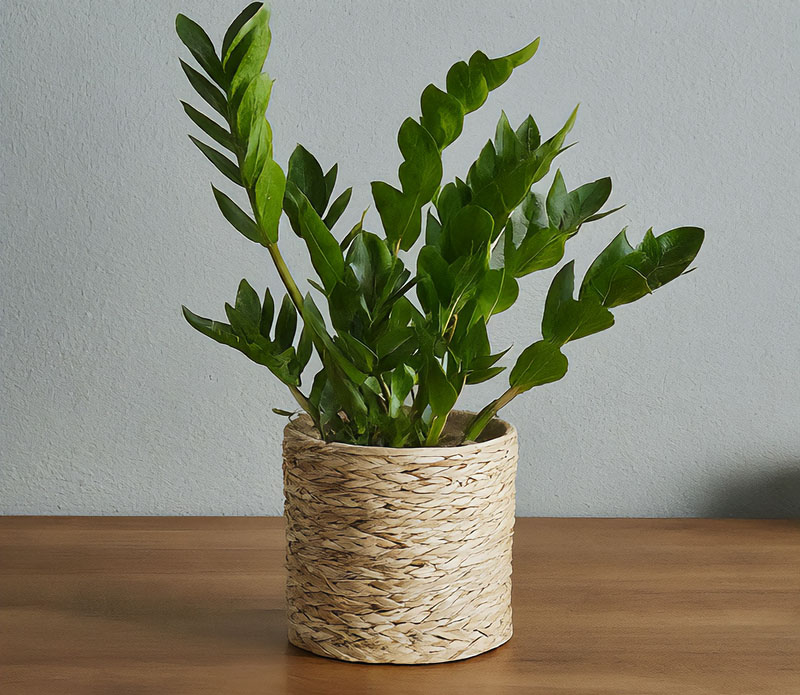
ZZ plant, which has become a popular houseplant in the last ten years, has a different appearance with strange masses of vertical stems and shiny dark green leaves.
When it comes to care, some people call ZZ plants the Eternity Plants. They are made to last and can survive in low water and low light. It grows in soil with high drainage and reaches 3 to 5 feet in height and 2 to 3 feet in width. Additionally, the ZZ plant can clean the air by removing toxins.
Where should ZZ plants be placed?
I usually see this plant in offices, bedrooms, and living rooms. You can place it anywhere in dim light.
3. Spider Plant (Chlorophytum comosum)
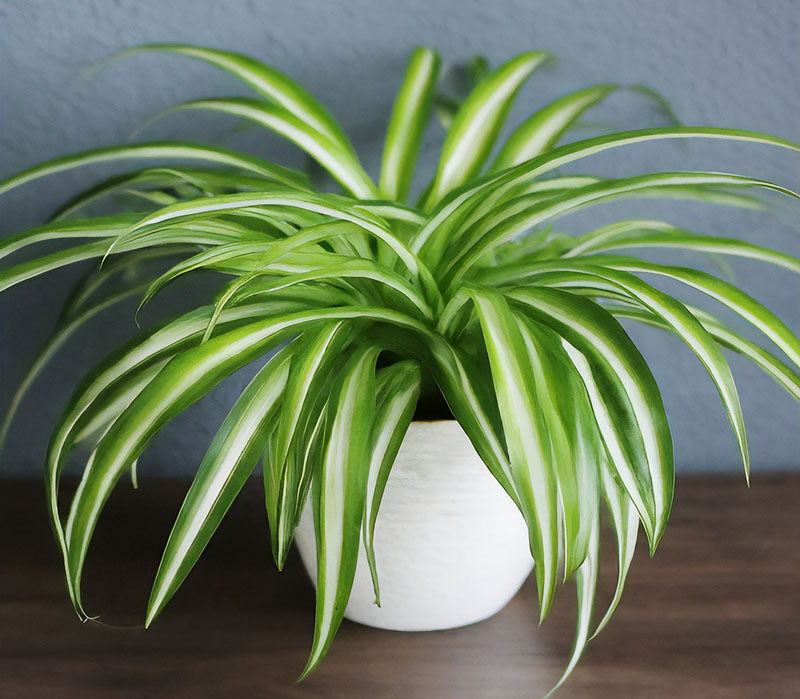
Arched leaves of the spider plant with green and white stripes may attract everyone’s attention, and small white flowers and plantlets that sometimes appear on it can make your house beautiful.
About spider plant care, I should say I always recommend it to beginner gardeners because it does not need challenging maintenance and care. Remember, it cannot grow without high humidity, and it has no problem with indirect and artificial light. Water moderately and give it Loamy, well-drained soil to grow well and reach a height of 1 to 2 feet and a width of 1 to 3 feet.
In addition, spider plants are safe for your pet and provide clean air for you to breathe by filtering the air from pollution like formaldehyde and xylene.
Where should spider plants be placed?
When I pay attention to the conditions that the plant prefers, I understand that spider plants are the best houseplants for the bathroom and kitchen to keep them.
4. Peace Lily (Spathiphyllum)
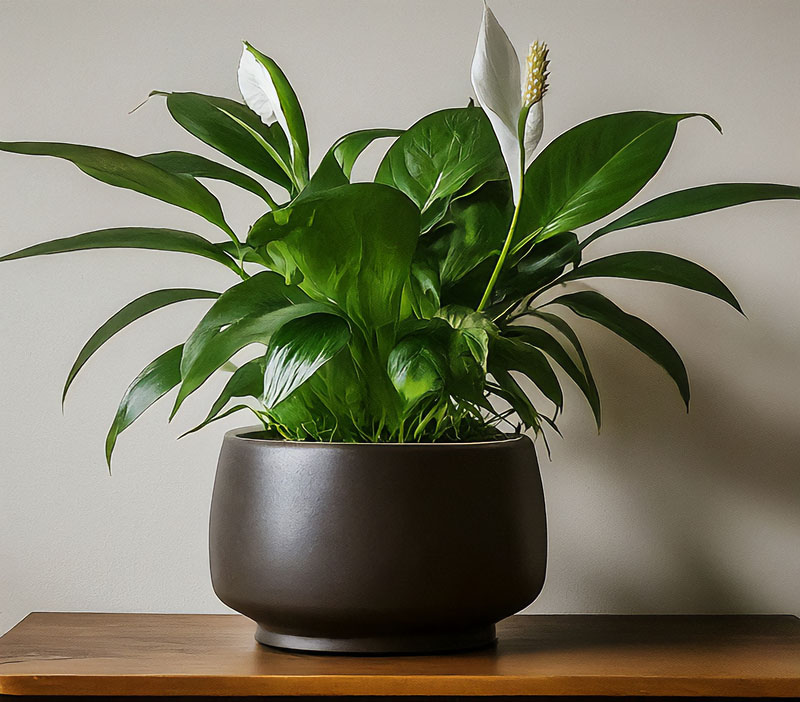
Peace Lily is one of the houseplants, which is also a flowering plant and displays beautiful white flowers between dark green leaves at home.
White spots or flower blooms, also known as Spathiphyllum spp, are also found in silk plants. Still, I don’t recommend it because when there is a live specimen, there is no reason to use a fake one.
With low to bright light, well-drained soil, and constant moisture, this plant grows well and becomes a mature plant 1 to 4 feet tall and wide.
The peace lily removes pollution like ammonia and formaldehyde and freshens the air, but be careful to keep your children and pets away from it because it is poisonous to humans and animals.
Where should Peace Lilies be placed?
The best place for peace lily is the living room and bathroom. Where did you see this flowering plant the most?
5. Aloe Vera
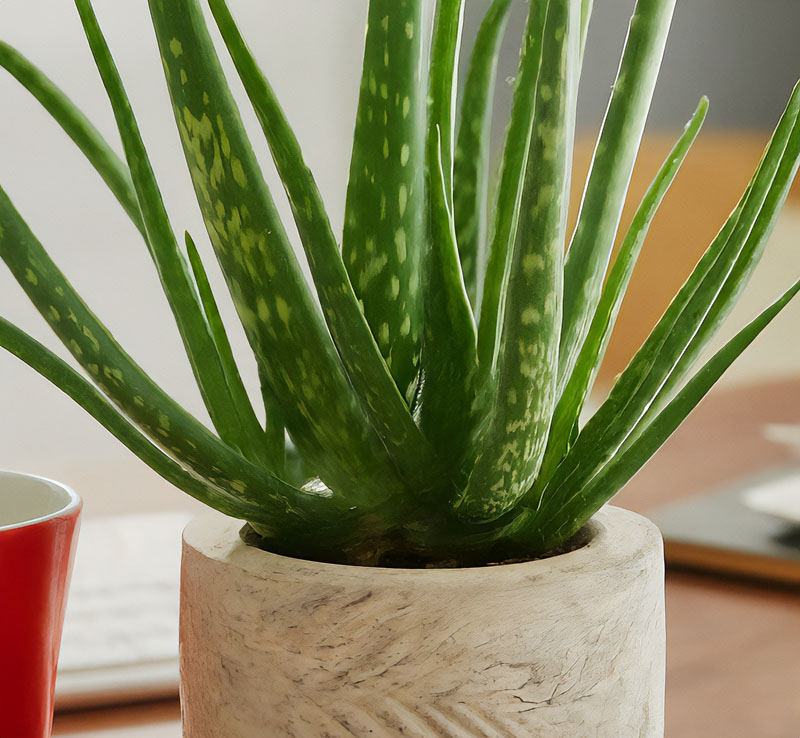
This succulent plant has thick, fleshy leaves containing gel. The gels obtained from the cut leaves (Aloe barbadensis miller) are very helpful for soothing burns and skin irritations. I’ve heard they are used topically in making first-aid medicines and cosmetics. All these positive points make it the best houseplant for health. It purifies the air by removing formaldehyde and it is toxic to animals and humans.
It does not need to be cared for, and you can give it as a gift to your friend who has no experience growing plants. Succulents thrive in bright indirect light, low watering, and sandy soil. Finally, you can even have a houseplant 6 feet tall to 12 feet wide.
Where should Aloe Veras be placed?
I believe that kitchens and sunny windowsills are very suitable, but you can place them anywhere that is bright.
6. Fiddle Leaf Fig (Ficus lyrata)
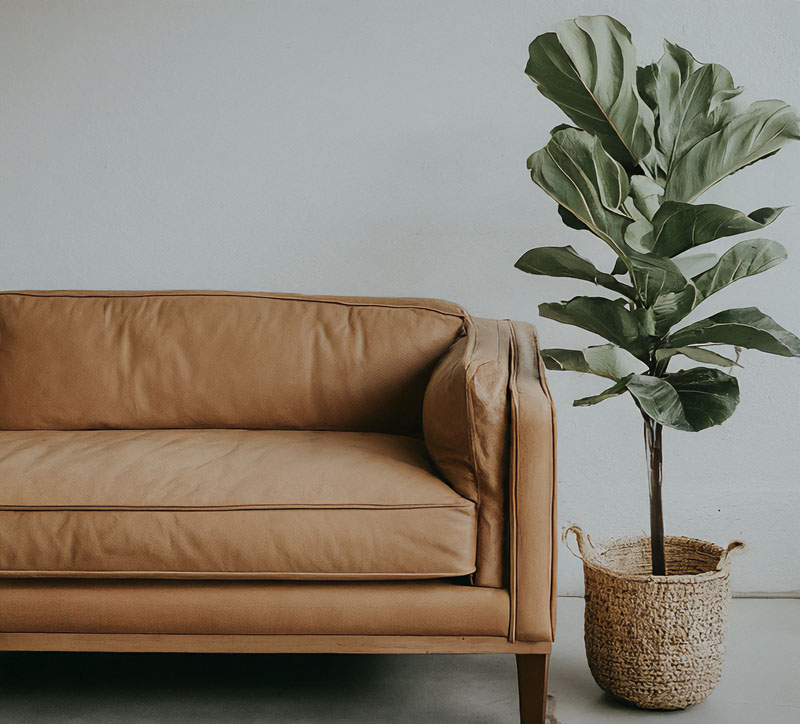
The fig leaf is a tree-like plant that has large violin-like leaves that both modernize your home and help improve air quality. Still, it is not kind to animals, and you should prevent your cat or dog from getting close to the fig leaf.
To take good care of a fig leaf, put it in bright light, for example, near a window facing south or east, so that it can photosynthesize easily. Use loamy soil with medium moisture and good drainage, and let the soil dry completely between waterings.
I read somewhere that this houseplant can grow up to 10 feet tall and two to three feet wide. Have you ever seen this plant with this height and width?
Where should place fig leaves be placed?
Since a fig leaf needs a lot of light, I recommend placing it in the living room and dining room. Where is the focal point of light in your home.
7. Pothos (Epipremnum aureum)
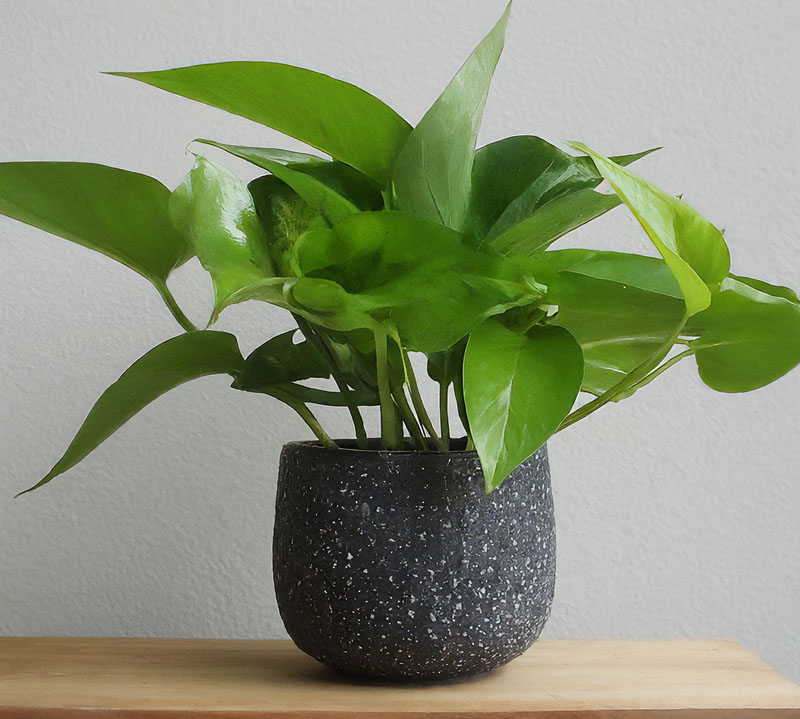
The heart-shaped leaves of this plant slowly climb up the wall or come down from the hanging basket.
Leaves color depends on light conditions and can change from medium green to colorful with cream stripes.
Pothos is easy to grow and maintain. Just put it in bright and indirect light and moist, loamy soil with high drainage to grow well.
I have seen pothos twenty feet tall and three to six feet wide.
Pothos cleans the air, but it is toxic to animals and humans.
Where should pothos be placed?
At home, in the office, in the bathroom, and wherever you need a houseplant, you can put a pothos.
8. Swiss Cheese Plant (Monstera Deliciosa)
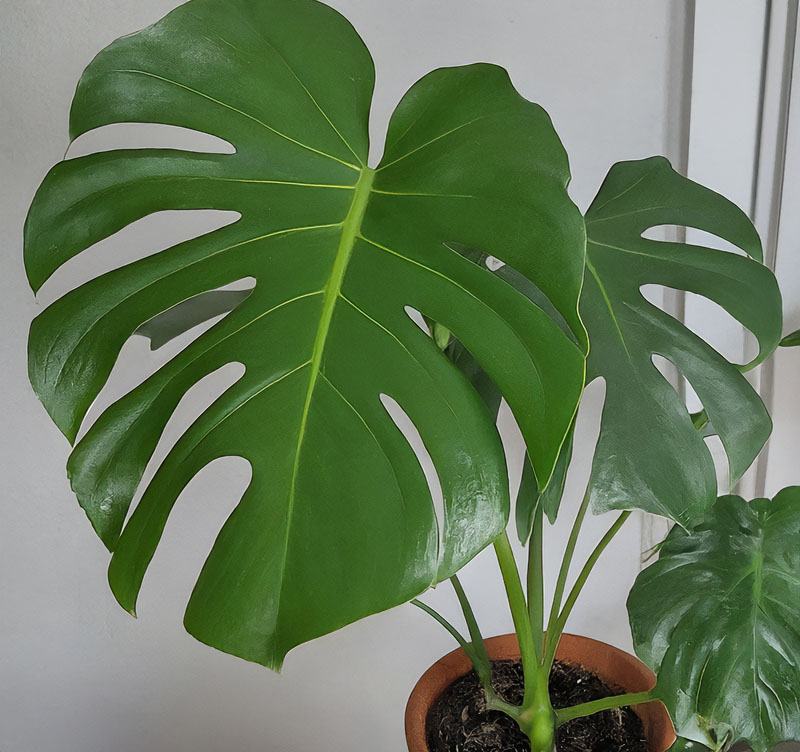
The Swiss cheese plant is a tropical houseplant that is also called a split-leaf philodendron. It has large, bright green, and heart-shaped split leaves that make it attractive. In addition to its beautiful appearance, it also helps to purify the air.
It is one of the easy-to-care-for plants. In fact, to reach a height of 10 feet and a width of 6 feet, nothing is needed except bright, indirect light, regular watering (every one to two weeks ), and well-drained, acidic soil.
Where should Swiss Cheese Plants be placed?
I think you should put it in a place where it can grow and expand, for example, in a living room or office.
9. Boston Fern (Nephrolepis exaltata)
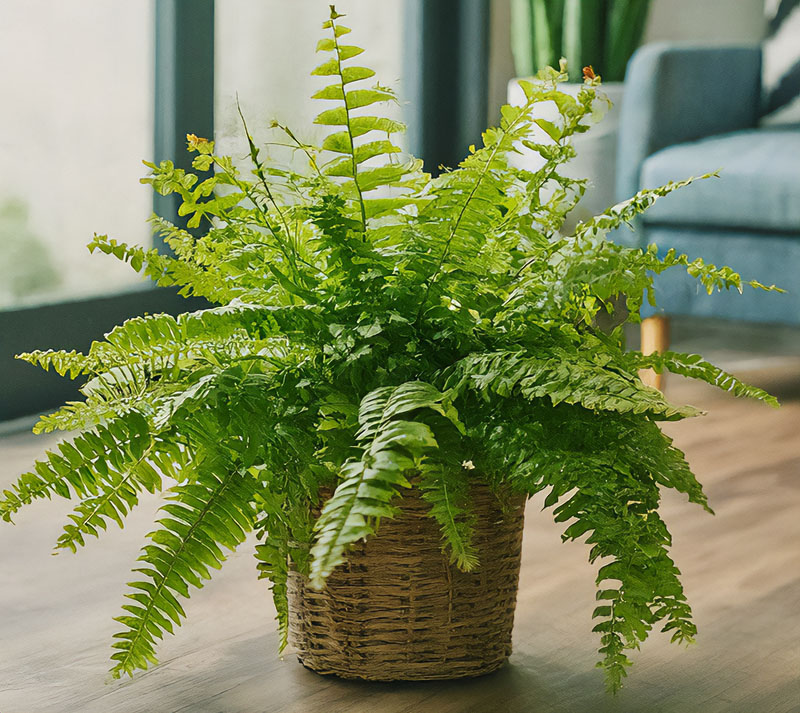
Whenever I hear the name Boston fern, I think of its Lush, arching fronds. This plant not only purifies the air but also adds moisture to the air.
Boston Ferns love high humidity and indirect light to grow.
Where should Boston Ferns be placed?
I hang it in baskets in shady places, but many people put it in the kitchen and bathroom because it is very humid.
10. Rubber Plant (Ficus elastica)
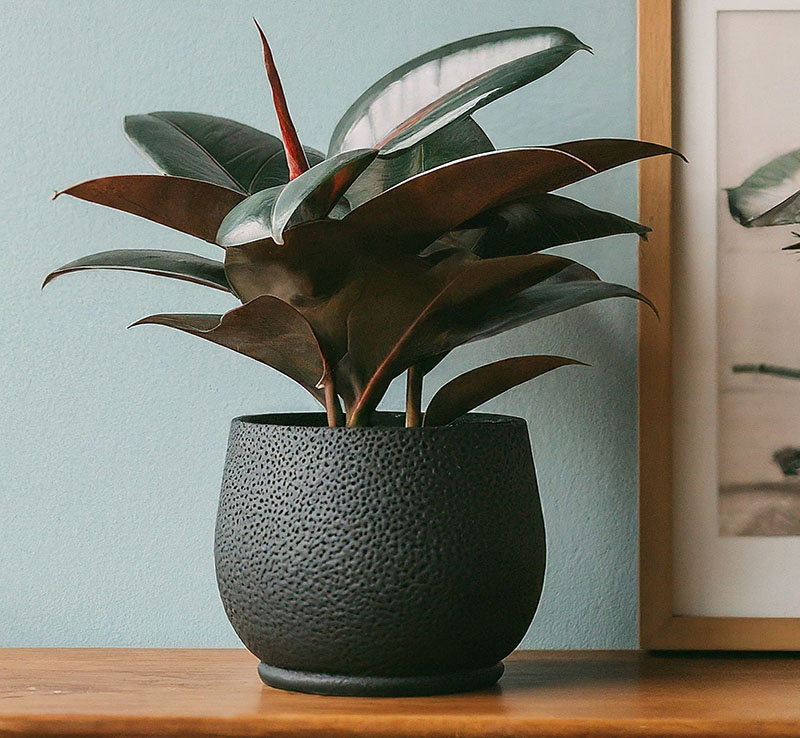
The rubber plant has shiny, oval leaves in green, bronze, or colorful colors. Of course, its attractiveness does not make us ignore its air purification effect.
Moreover, it has proven its ability to tolerate a variety of light levels; in bright, indirect light, in addition to well-drained soil and regular watering, you can quickly grow a rubber plant 10 feet tall and 7 feet wide.
Where should Rubber Plants be placed?
In my opinion, the living room and the corridors where the light reaches it are the best places to keep the rubber plant.
11. Jade Plant (Crassula ovata)
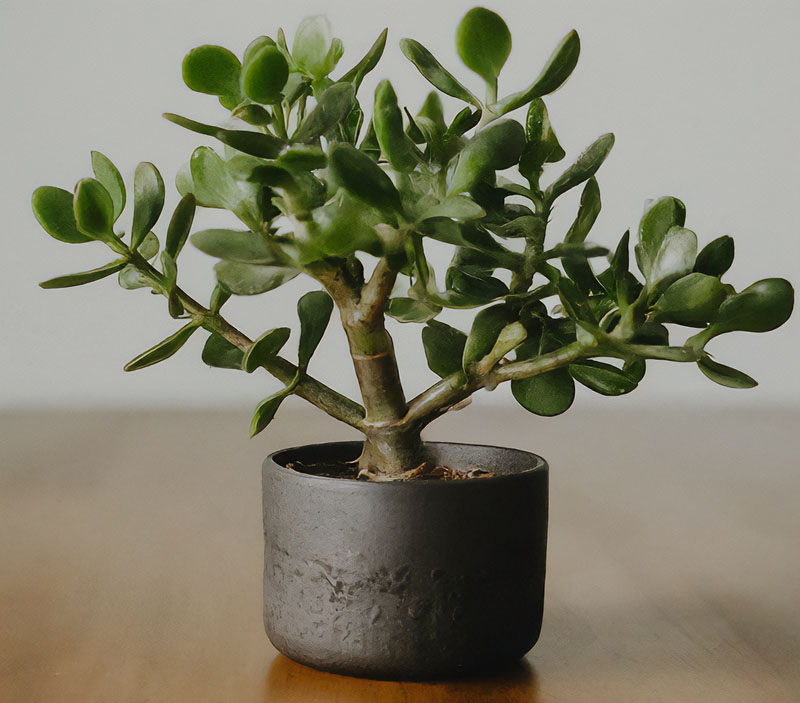
This succulent houseplants has a shrub-like form with thick, round, glossy leaves and has been popular for more than half a century.
I don’t believe it, but many people consider it as a symbol of good luck. It also cleans the air well and is toxic to cats and dog.
Jade Plant is easy to maintain. Only with low watering, bright light and well-drained soil, it will grow into a small tree with a height of 4 feet and a width of 4 feet.
Where should Jade palnts be placed?
I usually put the jade plant in front of the sunny windows of the living room or workplace so that the sunlight can reach it well.
12. Chinese Evergreen (Aglaonema)
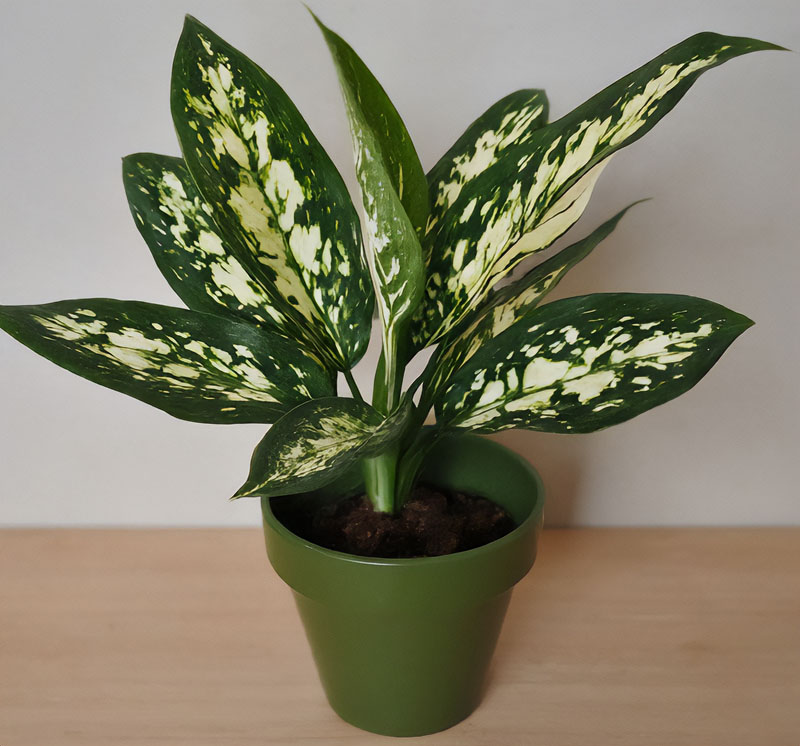
The Chinese evergreen plant has large, shiny, lance-shaped or oval leaves in a variety of colors, such as silver, white, red, and pink, and catches the eyes of every viewer.
It is Compatible with low light and low humidity and removes air toxins.
So, this houseplant grows well and reaches 4 feet tall and 4 feet wide with proper care.
Where should Chinese Evergreens be placed?
Although you may have seen Chinese evergreens in shopping malls and office buildings, I keep my plants in dimly lit places such as bedrooms and living rooms at home.
13. Heart-Leaf Philodendron (Philodendron hederaceum)
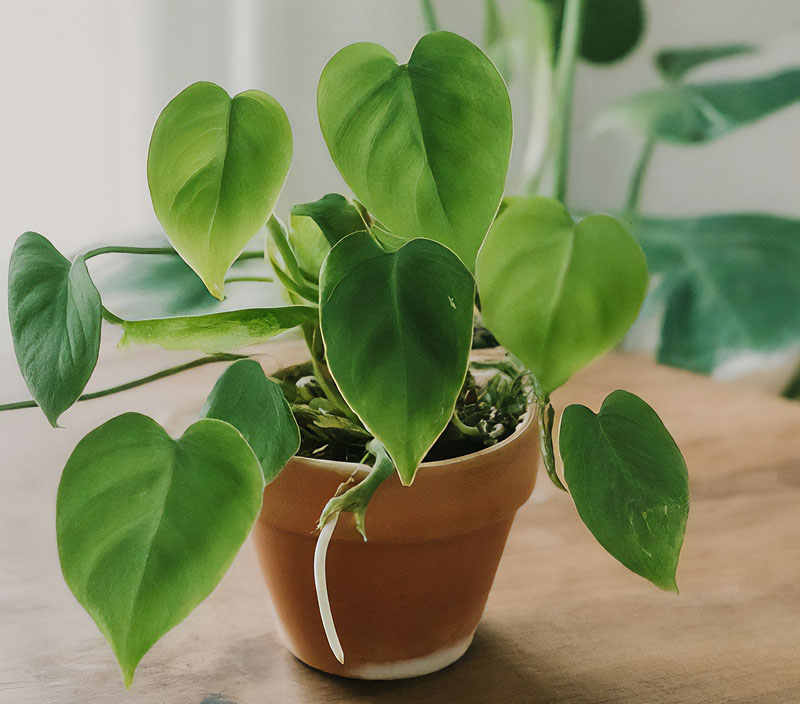
Suppose I want to talk about the advantages of this houseplant. In that case, first of all, it is an air purifier, it requires little care, and it makes your house fantastic with its shiny heart leaves that are climbing.
Regarding plant care, I must say that this plant grows both outdoors and indoors. Still, it avoids low temperatures and freezing temperatures. Just put it in bright, indirect light and use well-drained soil with an acidic to neutral pH range. Don’t forget that a potting mix that has peat is good for it.
Where should Heart-Leaf Philodendrons be placed?
You may have seen the climbing baskets of philodendron heart leaf plants in offices. Although I put one in the bedroom.
14. Dracaena
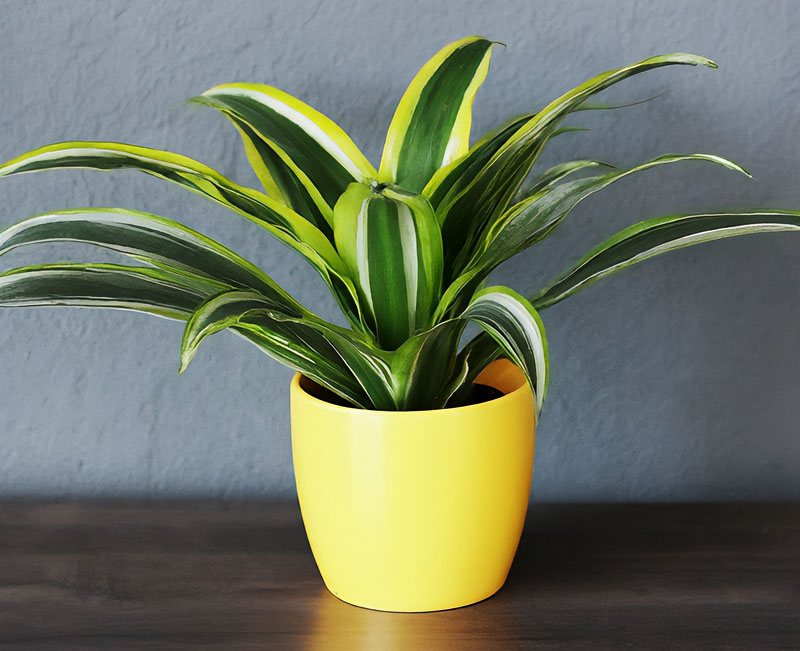
Growing a dracaena will bring a tropical feeling to your home; this plant does not require so much care and cleans the air.
Its long and narrow leaves need bright, indirect light and watering once in a while.
Where should Dracaenas be placed?
You can enjoy this beautiful plant in offices, living rooms, and bedrooms.
15. English Ivy (Hedera helix)

English ivy is a type of Trailing or climbing vine with lobed leaves. This houseplant grows very fast in a short time. Also helps purify the air, keeping the molds away from the house, and adds elegance to the house.
Like most plants, it needs bright, indirect light, regular watering, and rich, moist soil with high drainage.
Where should English ivies be placed?
I usually put the hanging baskets of these Northern European natives in the kitchen and living room, but in order to increase the life of the houseplants, make sure to put them in a place where the temperature is 70 degrees Fahrenheit or less.
16. Parlor Palm (Chamaedorea elegans)

This lush tropical palm with arching feathery branches is perfect for newcomers as it is easy to care for.
Suppose you are a fan of this houseplant. In that case, you should know that this plant prefers low to bright indirect light, low watering, constant humidity, and potting mix containing peat soil.
Where should Parlor Palms be placed?
By placing a Pallor Palm tree in the living room, bedroom, and office, you can make your living space and work office more beautiful.
17. Kentia Palm (Howea forsteriana)

This type of arched palm with full branches is beautiful and has a long life. In addition to improving the air, you can easily take care of it at home. Just remember regular watering and indirect light.
Where should Kentia Palms be placed?
Places with indirect light are suitable for this house plant, such as the bedroom, living room, or workplace. Where do you put this plant?
18. Orchid

The orchid plant, with its excellent and long-lasting flowers in various colors, has always been and still is a favorite of plant growers. This plant is not only fantastic but also filters the air. Be careful; it does not need a lot of watering or a lot of light.
Where should the orchids be placed?
Put it somewhere with indirect light, such as the bathroom, bedroom, and living room.
19. Prayer plant (Calathea)
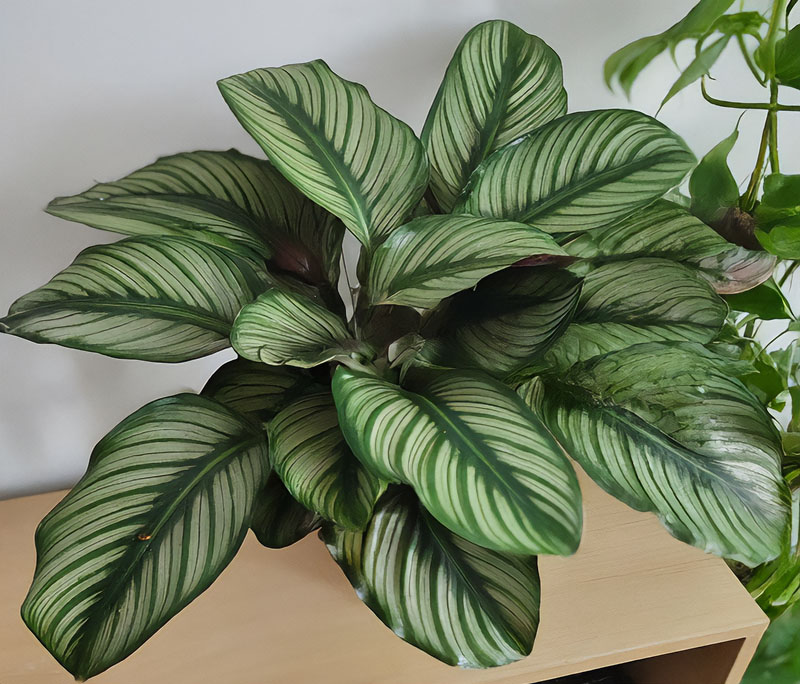
If you have ever seen the prayer plant, its Stunning and patterned leaves with purple, yellow, green, and white colors will fascinate you. These leaves are oval to strap-shaped, making them unique.
About maintenance, I must say that this plant is sensitive to cold temperatures and likes to grow in the sun and partial shade. Give it soil rich in organic matter until it reaches two feet in height and width.
Where should prayer plants be placed?
It is usually used for decoration so that you may have seen it in the living room of your home or office.
